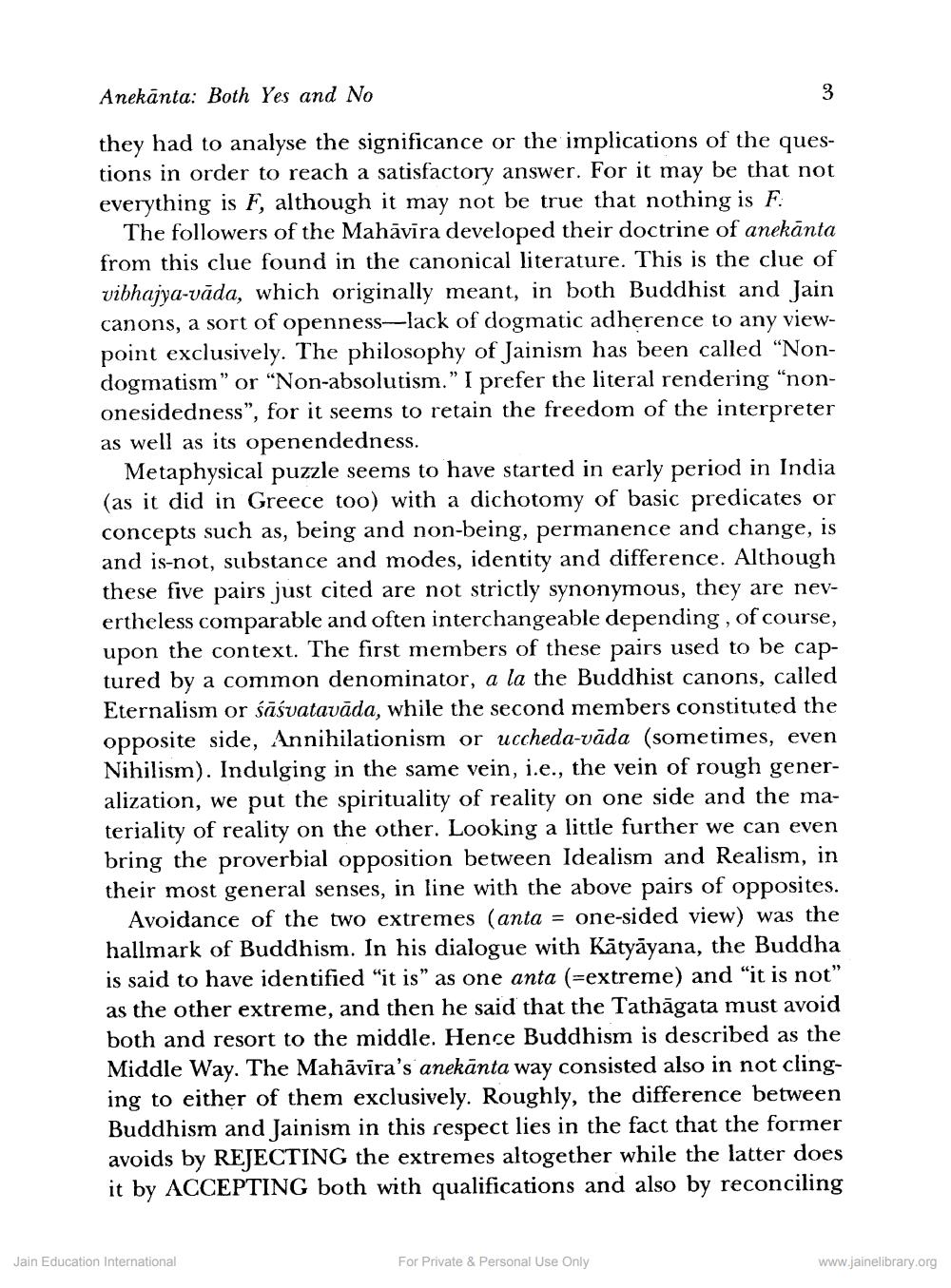________________
Anekānta: Both Yes and No
they had to analyse the significance or the implications of the questions in order to reach a satisfactory answer. For it may be that not everything is F, although it may not be true that nothing is F
The followers of the Mahāvīra developed their doctrine of anekānta from this clue found in the canonical literature. This is the clue of vibhajya-vada, which originally meant, in both Buddhist and Jain canons, a sort of openness-lack of dogmatic adherence to any viewpoint exclusively. The philosophy of Jainism has been called "Nondogmatism" or "Non-absolutism." I prefer the literal rendering "nononesidedness", for it seems to retain the freedom of the interpreter as well as its openendedness.
Metaphysical puzzle seems to have started in early period in India (as it did in Greece too) with a dichotomy of basic predicates or concepts such as, being and non-being, permanence and change, is and is-not, substance and modes, identity and difference. Although these five pairs just cited are not strictly synonymous, they are nevertheless comparable and often interchangeable depending, of course, upon the context. The first members of these pairs used to be captured by a common denominator, a la the Buddhist canons, called Eternalism or sasvatavada, while the second members constituted the opposite side, Annihilationism or uccheda-vāda (sometimes, even Nihilism). Indulging in the same vein, i.e., the vein of rough generalization, we put the spirituality of reality on one side and the materiality of reality on the other. Looking a little further we can even bring the proverbial opposition between Idealism and Realism, in their most general senses, in line with the above pairs of opposites.
Avoidance of the two extremes (anta = one-sided view) was the hallmark of Buddhism. In his dialogue with Katyayana, the Buddha is said to have identified "it is" as one anta (=extreme) and "it is not" as the other extreme, and then he said that the Tathāgata must avoid both and resort to the middle. Hence Buddhism is described as the Middle Way. The Mahavira's anekanta way consisted also in not clinging to either of them exclusively. Roughly, the difference between Buddhism and Jainism in this respect lies in the fact that the former avoids by REJECTING the extremes altogether while the latter does it by ACCEPTING both with qualifications and also by reconciling
Jain Education International
3
For Private & Personal Use Only
www.jainelibrary.org




